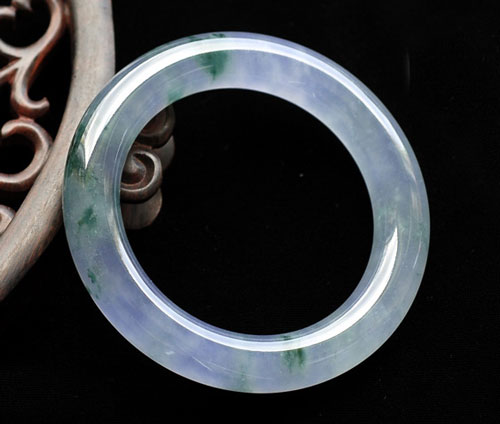"Hey, Akabane is also; Cui, Qingyu Que is also", this is the interpretation of the word "Jade" by Xu Shen in the Eastern Han Dynasty. Later, the ancients used these two words that originally described bird feathers to depict red and green ornaments. Probably in the Song Dynasty, the two words merged to describe the green jasper. At this time, the jade, the word "Jade", is a collection of jadeite. It is mainly known as Burmese jade because it is mainly produced in Myanmar.

Jade history and wearing, maintenance, collection
Jade, because its main colors are green and maroon, it is consistent with the interpretation of the ancients' red and green. Probably also for this reason, the word jade has gradually changed from jasper (nephrite) to the special name of today's jadeite collection.
According to archaeological materials, British historian Joseph Needham believed that the 18th century jadeite was introduced from Myanmar to Yunnan, China. It is generally believed that the real emergence of Burmese jade in China is something after the Ming Dynasty. In the Qing Dynasty, due to the love of the palace aristocrats, Jade was worth a hundred times and became the king of jade.
According to the records of Sotheby's and Archaic Christie's auction house, some high-end emperors (such as emerald green, crystal clear and transparent) in the past, one million over can be described as both. In his book "Preservation of Jade", Mr. Li Yinghao of Hong Kong recorded a glass-type jade Guanyin carving of Hong Kong Christie's auction in the spring of 1981, worth HK$3 million. The value of a pair of jade bracelets in the late Qing Dynasty is as high as 10 million Hong Kong dollars. Therefore, there is a saying: gold is valuable and jade is priceless.
Those who wear and collect jadeite should be careful not to collide and drop the jade pieces. Sometimes the surface looks like no damage, but in fact, after the collision, the internal structure of the jade has been damaged, and the dark lines are produced.
Jade is very jealous of oily greasy. If it is a high-end goods that preserves value, it is not good to wear it into the kitchen to cook.
Jade is also not suitable for close to high temperatures, but not for a long time. Because of this long-term, it is easy to produce physical changes and lose luster, not so fresh.
Jadeite should not be exposed to strong acid solutions, which would destroy the structure and color of the jadeite.
According to modern biological, physical and chemical analysis: many jade contain more than ten kinds of trace elements beneficial to the human body: such as gold, silver, silicon, zinc, iron, selenium, magnesium, manganese... because jade is the most "gas" Abundant materials, so often wearing jade can make the trace elements contained in jade inhaled into the human body through the skin, so as to balance the imbalance of yin and yang blood, so that people care for health and longevity. The case of zinc can activate insulin, regulate energy metabolism, maintain the body's immune function, promote children's intellectual development, and have anti-cancer, anti-distortion, anti-aging effects.
Manganese can fight the damage caused by free radicals, participate in the synthesis of proteins and vitamins, promote blood circulation, accelerate metabolism, anti-aging, prevent Alzheimer's disease, osteoporosis, atherosclerosis and so on. Selenium is a component of glutathione peroxidase, which catalyzes the reduction of toxic peroxides to harmless hydroxy compounds, thereby protecting biofilms from damage and acting as an anti-aging agent; Harmful heavy metals such as cadmium and lead can poison the human body, enhance the body's immune function, improve the body's ability to resist disease, and achieve the role of cancer prevention and treatment.
Finished Vislon Zipper,YKK Resin Zipper,YKK Rc Zipper,YKK Recycled Zipper
YKK AUTHORIZED DISTRIBUTOR , https://www.ykkzipperdw.com
![<?echo $_SERVER['SERVER_NAME'];?>](/template/twentyseventeen/skin/images/header.jpg)